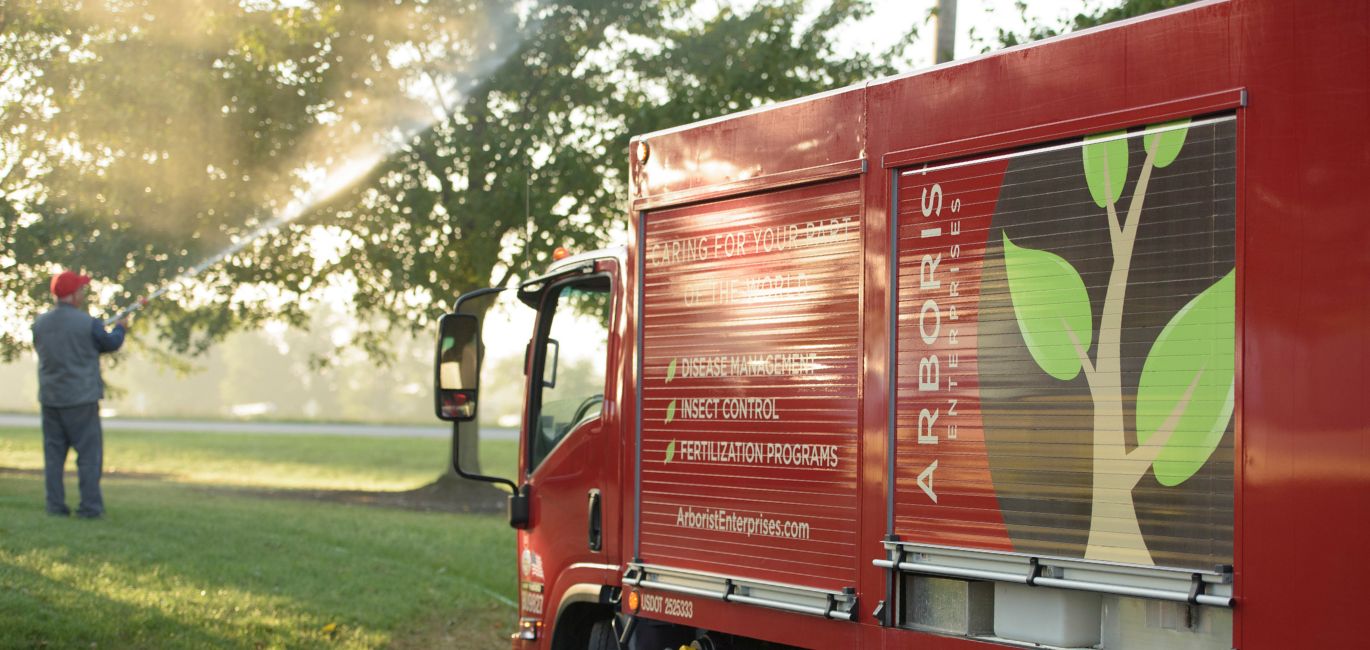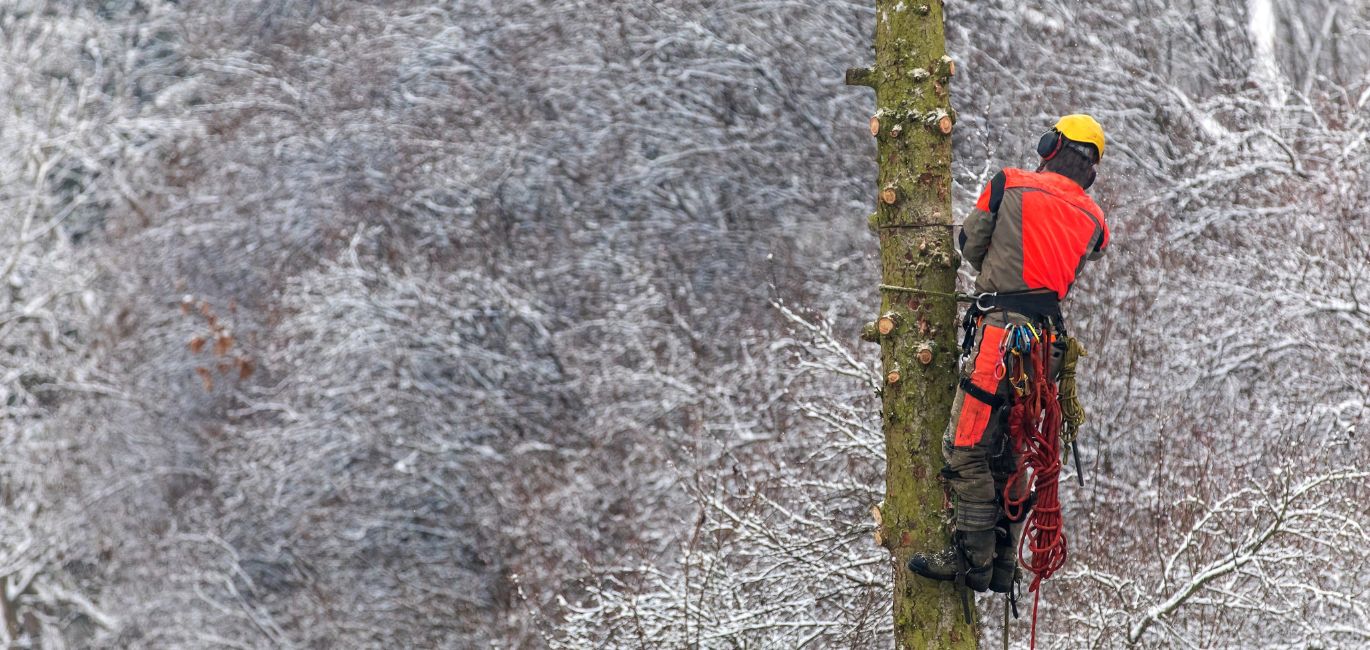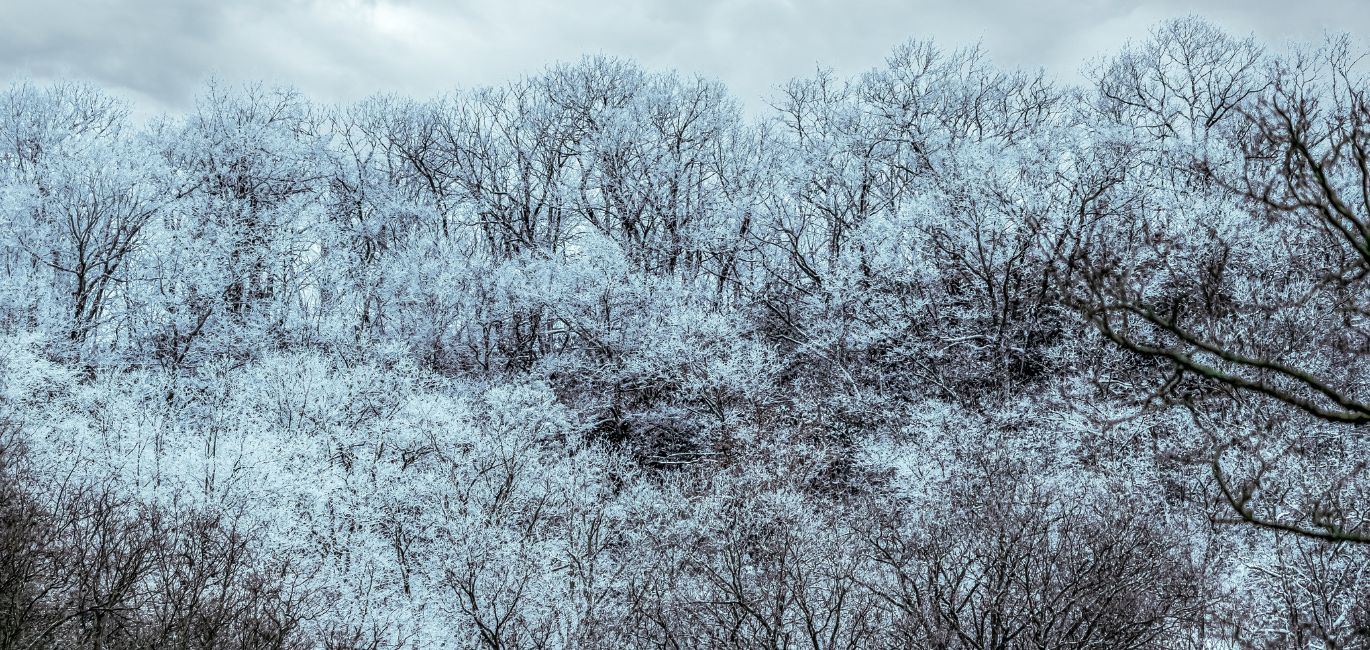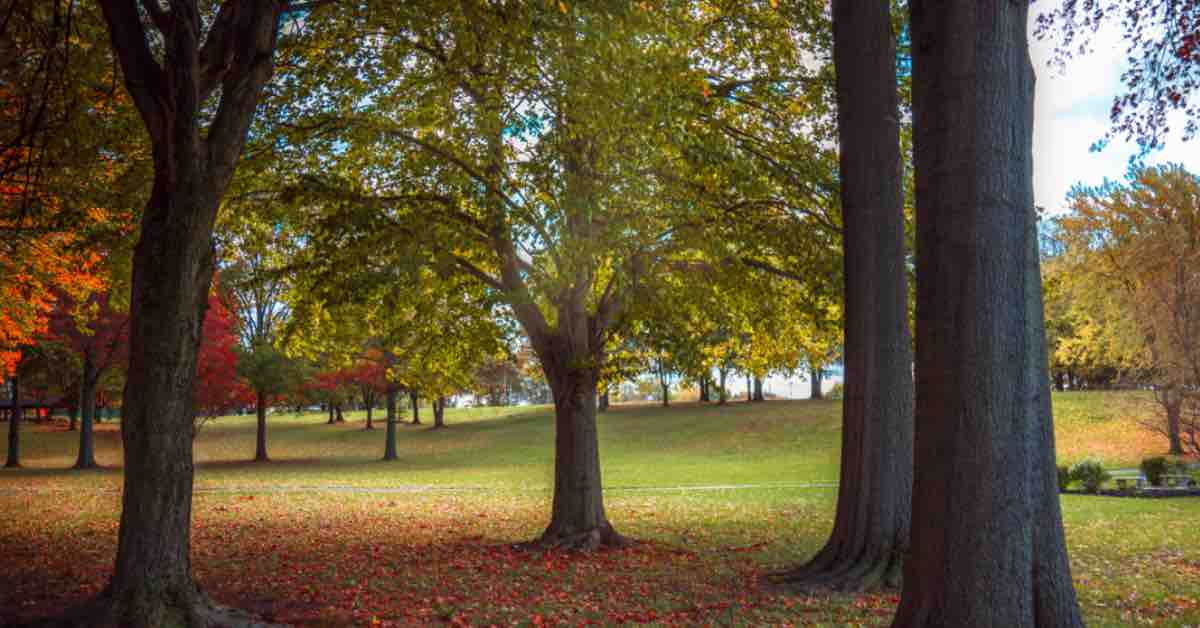
A Guide to Fall Tree Fertilization
Summer’s harsh conditions can weaken your trees and shrubs, making them vulnerable to pests and diseases. As we transition into the colder months, it’s important to give your plants a boost to ensure they emerge strong and healthy in the spring.
Fall tree fertilization is the perfect solution. By replenishing essential nutrients, you can help your trees and shrubs recover from summer stress, build resilience for winter, and prepare for a vibrant growth season next spring.
Key Takeaways
- Fall tree fertilization benefits your trees and shrubs by replacing nutrients, reducing tree stress, and supporting root development.
- Typical signs your trees may need fall fertilization include stunted growth, poor flowering, dying branches, or discolored leaves.
- Trees require supplemental nutrients because the soil does not naturally replace its nutrients as it would in a forest.
- Tree care companies like Arborist Enterprises have access to more types of fertilizer and can create customized cocktails that are impossible to find anywhere else.
- Soil-injected fertilizers reduce the risk of runoff, get the nutrients directly to the tree’s roots, and increase soil aeration.

Benefits of Fall Tree Fertilization
Fall tree fertilization offers an incredible number of benefits to keep your trees looking strong and healthy throughout the year. Fertilization with a high-quality fertilizer will strengthen your trees in three main ways:
- Replace Nutrients: Without the necessary nutrients, trees suffering from disease or drought won’t have what they need to recover. Fall fertilization replaces nutrients missing from the soil so trees can recover and prepare for the cold months ahead.
- Reduce Tree Stress: Drought, disease, and harmful insects all create stress for trees and shrubs. Treating your trees will reduce or eliminate that stress so they can focus their energy on putting out new growth or fighting off insects or diseases.
- Support Tree Root Development: You can’t have a strong tree without strong roots. A tree’s health starts underground. Fall fertilization helps nourish the roots, making them stronger and healthier. This, in turn, helps the tree withstand winter stress and promotes vigorous growth in the spring.
PRO TIP: Fall is not just a time for fertilization of your trees, it is also the perfect time to do some lawncare before the winter. Learn more about how to take care of your lawn in the fall with our previous article on aeration and overseeding.
Signs Your Tree May Benefit from Fall Fertilization
Your trees will display several signs to warn you that they are dealing with a nutrient deficiency. The typical signs a tree needs fertilization include:
- Stunted Growth: If you notice your trees aren’t growing as much as they used to or they aren’t growing much at all, it could be a sign your trees need supplemental nutrients.
- Poor Flowering or Fruit Production: When you notice your fruit trees aren’t producing much fruit or your ornamentals don’t flower as much as they used to, this can be a sign of a nutrient deficiency in your trees.
- Dying Branches: Dead and dying branches are signals that something is wrong with your tree. One such problem could be a lack of nutrients in your soil, necessitating fall fertilization.
- Discolored Leaves: In the summer, your tree’s leaves should be green and shouldn’t show their fall color until the end of September. If you notice your leaves are yellowing or showing off their fall color in the summer, it may be a sign of nutrient deficiency in your trees.
Even when a tree demonstrates these signs, it does not necessarily mean fall tree fertilization is the answer to the problem. For more information about what’s ailing your trees, have an ISA Certified Arborist conduct a soil test to determine if there is a nutrient deficiency and what nutrients the soil is lacking.
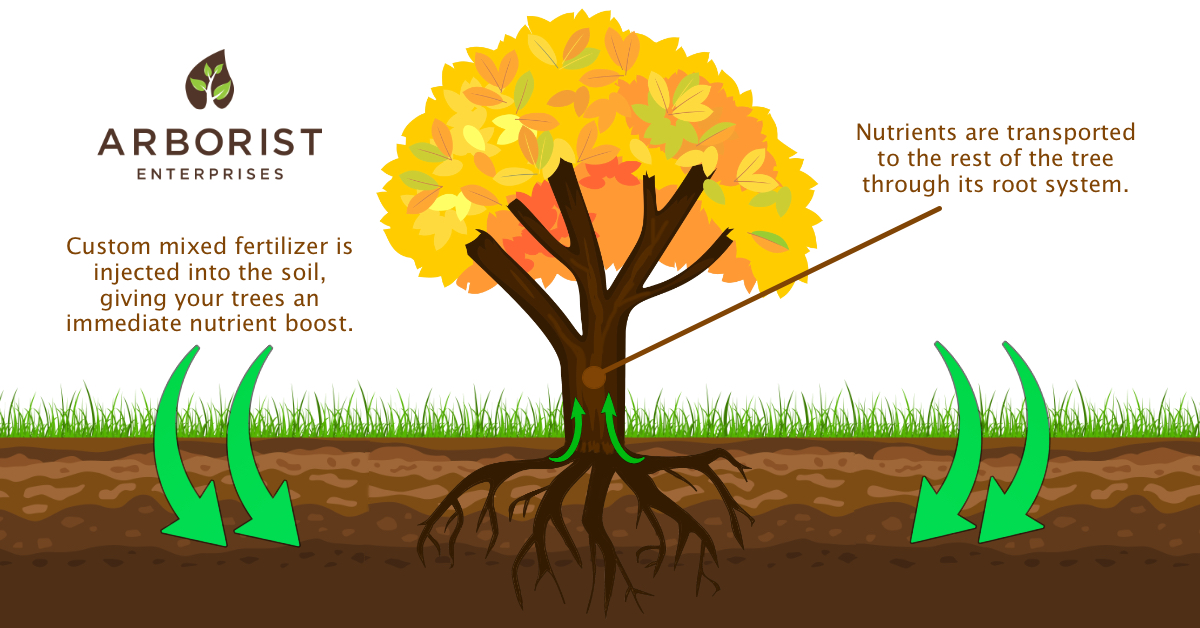
Trees in Southeastern PA Need Added Nutrients
In a perfect world, leaves would fall from trees, decompose into the ground, and turn into compost that would feed nutrients back into the tree to complete the natural cycle. This process frequently occurs in forests, allowing trees to naturally keep growing without supplemental nutrients from fertilizer.
In Lancaster County and the rest of Southeastern Pennsylvania, however, most of the ground is now residential or farmed land. As a result, most homeowners rake leaves away from their trees, shrubs, and grass each fall.
While removing those leaves in the fall is important for the health of your grass and the cleanliness of your property, it means leaves aren’t there to feed your trees. Land development has also removed most of the topsoil in our region, stripping away many of the naturally occurring nutrients trees and shrubs would rely on for survival.
Developed lands can be inhospitable to plants so we need to return those nutrients to the ground if we want trees and shrubs to grow in our backyards.
The Type of Fertilizer You Use Matters for Tree Health
The fertilizers you’ll find at your big box stores and garden centers offer some nutrients, but not as many as most trees require to stay healthy. The commercial fertilizer our team uses, for instance, includes a strong concentration of nutrients that you can only find by working with a professional plant health care specialist.
Our fertilizers are also customized to the specific needs of each individual tree. Some tree and shrub species need more iron or manganese than others. Ideal pH level needs can also vary by species. Our plant care specialists determine the needs of your specific trees and shrubs and customize a fertilizer to meet their needs.
Soil-Injected Fertilizer Delivers Nutrients Directly to Your Trees
At Arborist Enterprises, we recommend fertilizing your trees and shrubs between late September and November. Our primary method for delivering nutrients to your tree is through soil injection. During a soil injection, we’ll use our state-of-the-art equipment to send the nutrients into the soil by injecting a fertilizer cocktail into it.
Soil-injected fertilization has numerous benefits for your trees, including:
- Reduced Risk of Fertilizer Runoff: Throwing a heap of fertilizer on top of the soil not only runs the risk of over-fertilizing your trees, but it can also runoff after a storm. Deep-root fertilization avoids this problem by getting the nutrients directly into the soil. Fertilizer runoff has been a major issue in Pennsylvania, with former Pennsylvania Governor Tom Wolf signing a bill in an effort to reduce the level of fertilizer runoff in the commonwealth.
- Increasing Soil Aeration: Soil injection will create holes in the ground that assist in aerating the soil and reducing compaction. Compacted soil limits a tree’s ability to seek out nutrients and new sources of water.
- Delivers Nutrients Directly to the Roots: Our method gets the nutrients as close to the roots as possible to increase the likelihood of the tree absorbing the nutrients.
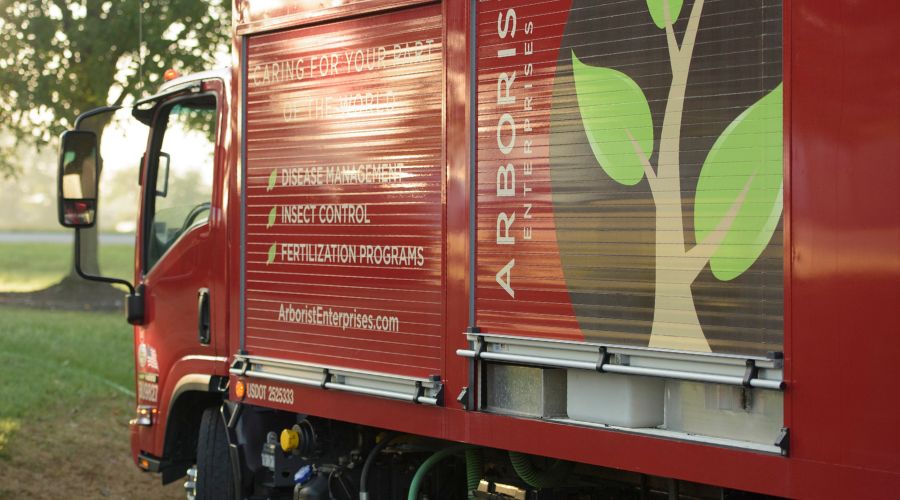
Arborist Enterprises is Ready to Assist with Fall Tree Fertilization
The best way to care for your trees and shrubs is with a custom fertilization treatment. Our plant care specialists and Certified Arborists will evaluate your tree’s health needs and create a custom fertilization treatment to keep your trees healthy year-round.
Ready to get your trees the nutrients they need? Call us today at 717-393-7602 or request an estimate online to get started.



